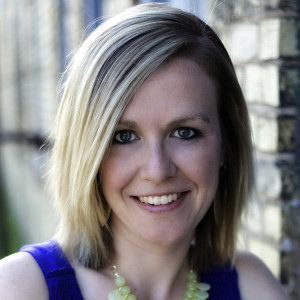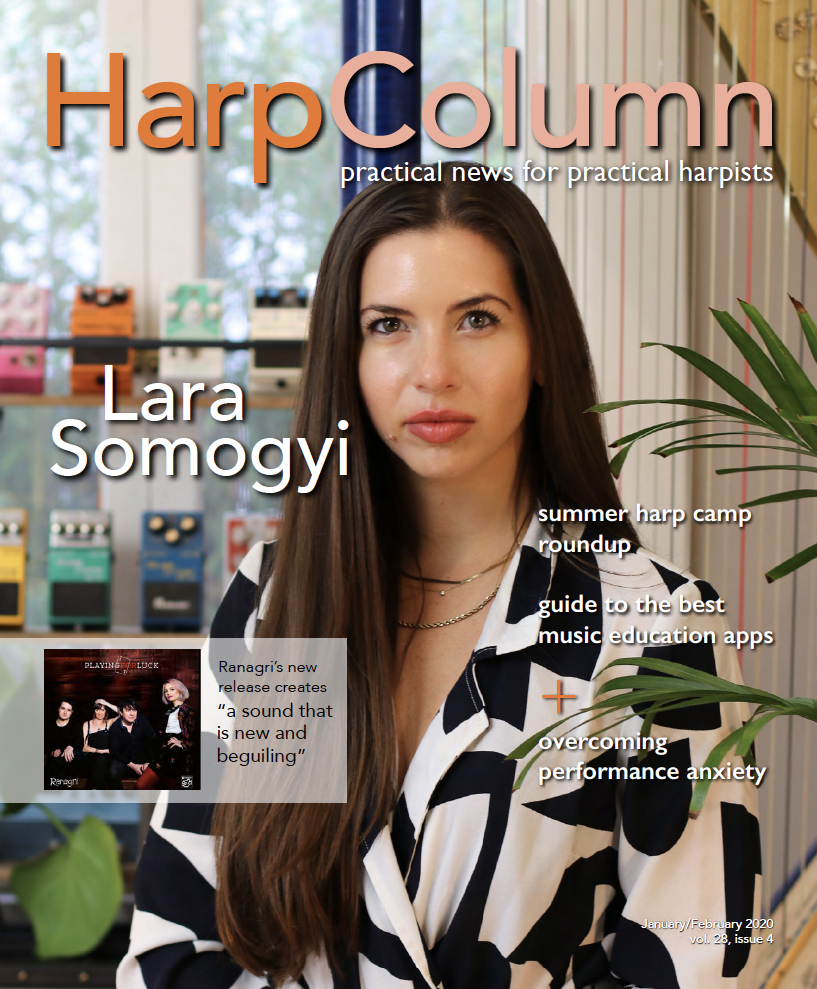One of the things we strive to do in each issue of Harp Column is to bring you interviews with harpists who are doing something interesting or who have a fascinating view from the harp we think is worth sharing. With just one interview in each issue, and six issues each year, there are more harpists worthy of an interview than magazine covers on which to feature them.
As the new decade begins, it would be a good opportunity to a look at some harpists you may not know, but should. To kick off this series of interviews, we talked to Lara Somogyi (See Special fx). Maybe you’ve seen Somogyi’s music videos on YouTube or attended one of her workshops on fx pedals. (If the term “fx pedal” has you scratching your head, check out our explanation in the interview.) We have been intrigued by the her innovative use of technology combined with her seriously impressive harp chops. Somogyi has also caught the attention of some big names in the entertainment world in the short time she’s been in Los Angeles. I won’t spoil the surprise by name-dropping here, but she has shared stages and recording studios with some of the biggest names in pop music and film.
Despite her success so far, Somogyi isn’t yet a household name in the harp world. She isn’t on the faculty of a big-name school. She doesn’t hold a position with a big orchestra. And she’s not a recording artist for a major label. But Somogyi is doing exactly what she wants to be doing, and she’s doing it very well.
Somogyi says she has always been drawn to the sounds of pop and R&B, and has explored how to weave the harp into that music. “There’s room for harp anywhere,” she says, “which is the beauty of the instrument.” She chose the Royal Academy of Music in London for college because she could study so many different aspects of music. She wanted to explore everything the harp could do in order to play the kind of music that inspires her. She experimented and failed and experimented some more with technology. “…I think failure can be a huge source of inspiration in music,” she declares. Somogyi might not be on a well-trodden career path for a harpist, but she sees the way forward, and she’s all in.
On the other end of the harp career spectrum, we talk with legendary harpist Judy Loman in this issue (see A Listening Ear). This is the first time we have sat down with Loman since we featured her on the cover of the magazine in 1996. She is one of the best known and respected harpists living today. She has been playing the harp for more than 75 years. Think about that for a moment—when Loman plucked her first harp string, World War II was raging and television was little more than a lab experiment.
Loman’s career arch has been the definition of a traditional professional harpist—principal with a major symphony, faculty at prestigious conservatories, recording artist for major labels. She has so much wisdom to offer from her six decades of teaching and performing and recording that we couldn’t wait to hear her answer to a question we posed to her about her advice for young harpists today. There was no hesitation in her reply: develop a diverse skill set and consider non-traditional career paths if you want to be a professional.
Both Somogyi and Loman offer essentially the same guidance for aspiring harpists: broaden your skills, don’t be afraid to break with traditional, and do it all with the highest standards of musicianship and technique. These are definitely words of wisdom worth heeding as we enter the next decade. •






